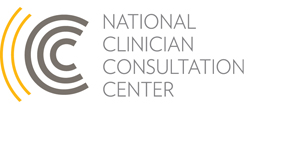Case of the Month: Needlesticks, HIV+ Source Patients, and PEP
Case Summary
A physician who specializes in occupational health called regarding a registered nurse (RN) who sustained a needlestick 36 hours ago. She was drawing blood with a butterfly needle from a source patient who is known to be HIV antibody-positive. The injury was shallow and it was unknown if the needle was visibly bloody at the time. The RN was medically evaluated immediately after the exposure. She had baseline labs drawn: HIV antibody and hepatitis C antibody. The RN had no significant past medical history, was on no medications, and was not pregnant or breastfeeding. She had previously received all three immunizations in the hepatitis B vaccine series and a documented positive titer > 10 mIU/mL in the past. Upon consultation with the occupational health physician, she decided to start PEP using emtricitabine/tenofovir (Truvada), one pill once a day, and raltegravir (Isentress) 400mg twice a day.
The source patient is a “new HIV positive” per the caller, and nothing is known about their HIV viral load, CD4 count, diagnosis date, HAART treatment, or resistance history. The patient was hepatitis B surface antigen (HBsAg) negative and hepatitis C antibody negative at the time of the exposure/baseline testing. The calling clinician wants to know for how long the nurse should take PEP and what additional information is needed to best manage the exposure.
CCC Consultant Advice
A full course of PEP is 28 days. Overall, risk of HIV transmission is low and is considered a rare occurrence. For percutaneous needlesticks from known HIV antibody-positive source patients, CDC estimates the risk of exposure at between 0.23% and 0.3%. According to Notes from the Field: Occupationally Acquired HIV Infection Among Health Care Workers — United States, 1985–2013, a new resource released in the CDC’s MMWR, there has only been one documented case of HIV transmission to a health care worker since 1999. That exposure occurred in 2008. Betwen 1985 and 1999, there were 58 confirmed cases of HIV transmission in the occupational setting: percutaneous (49), mucocutaneous (5), combined percutaneous and mucocutaneous (2), and unknown exposure (2).
For this case, it would be helpful to find out more about the source patient’s history of HIV. If the source patient consents, a viral load and CD4 count would help the physician assess the risk of transmission to the exposed. In addition, the consultant suggested the caller try to find out the source patient’s HAART treatment and resistance history (HIV genotype), if any. The caller should also take the exposed nurse’s CBC and complete metabolic panel (CMP) to check liver and renal function at baseline. These tests should be repeated at 14 days into PEP therapy to monitor for any potential liver or renal toxicities.
HIV antibody testing for the exposed patient should be repeated at 6, 12, and 24 weeks after the exposure. There is no need for baseline or follow-up testing for hepatitis B or C: the nurse’s documented positive hepatitis B antibody titer showed ≥10 mIU/mL in the past and she is considered immune for life, and the source patient is negative for both hepatitis B and C.
For more information on occupational exposures, see:
CDC’s Occupational HIV Transmission and Prevention Among Health Care Workers
CDC’s HIV Transmission Risk
Because CCC consultations are based on information provided by the caller or clinician accessing the online consultation center, without the benefit of a direct evaluation or examination of the patient, consultations are intended to be used as a guide. They do not constitute medical advice and are not to serve as a substitute for medical judgment. This Case of the Month includes consultation based on the most up-to-date evidence at the time of its publication. To learn about current recommendations, please call one of our clinical consultation lines.
 University of California, San Francisco |
University of California, San Francisco |
